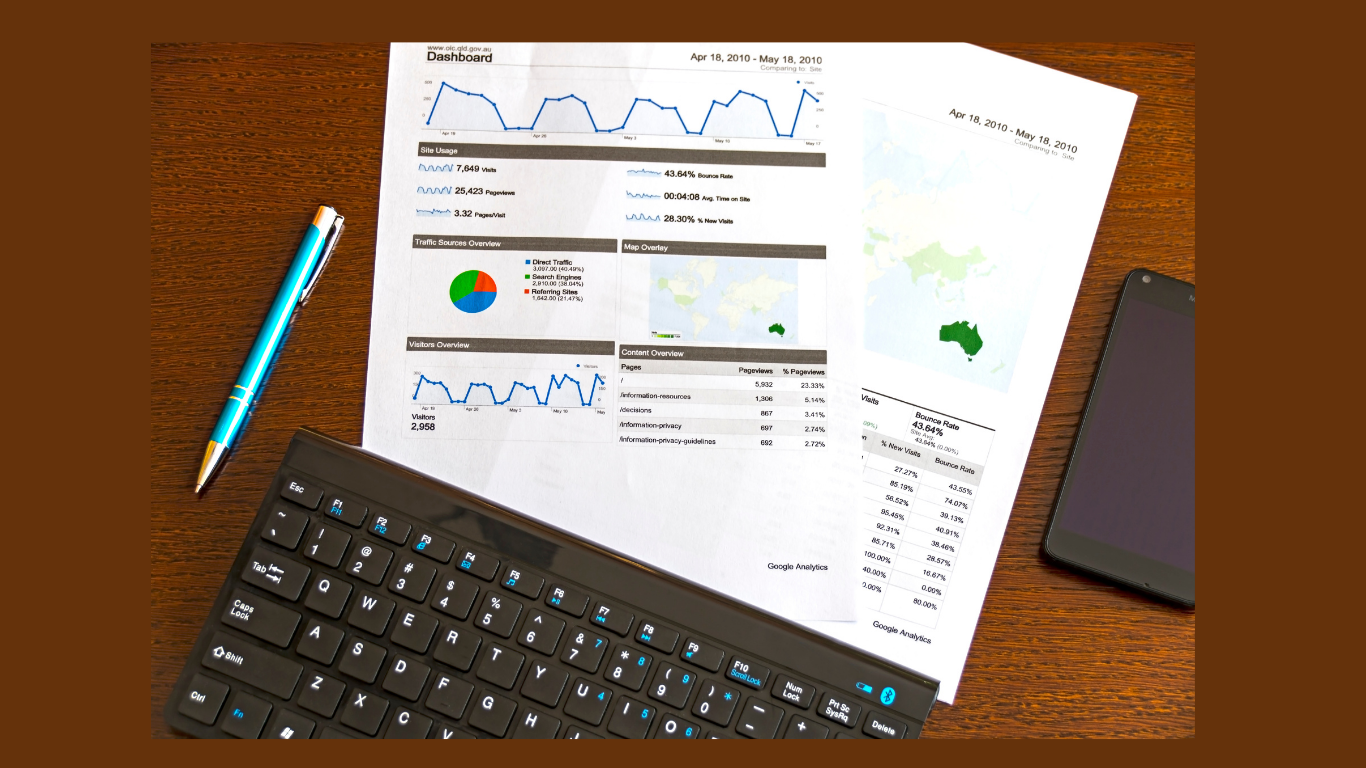
Data Analytics in Digital Marketing has changed the game forever. The days of running campaigns on gut feeling are over. Today, every decision, from where you place an ad to what color button you use, can be backed by data.
At Aqva Marketing, we see this every day. Numbers don’t lie, but they do need interpretation. Data is like a compass; it points the way, but you still need someone experienced to read it right.

What Is Data Analytics in Digital Marketing?
Think of Data Analytics as decoding human behavior through numbers. Every click, every scroll, every second someone spends on your website tells a story. Data analytics helps you read that story and act on it.
For example, if people keep abandoning your cart at checkout, analytics tells you where they drop off and why. Maybe your shipping cost is too high, or maybe your form is too long. Whatever the reason, once you know it, you can fix it. That’s the power of data analytics in digital marketing: it offers clarity.
Why Data Analytics in Digital Marketing Matters
1. Smarter Targeting & Personalization
People don’t like being sold to. They like being understood. When you use analytics correctly, your campaigns speak to your audience’s needs, not at them, but to them.
Take Netflix. Its recommendation system is powered by data analytics. It studies what viewers like, when they watch, and what they skip. The result? 80% of what people watch comes from recommendations. Imagine applying that kind of precision to your marketing.
2. Improved ROI & Cost Efficiency
Every business wants to get more from its budget. With analytics, you can see exactly what’s working and what’s not.
A telecom company once discovered that one of its biggest ad spends was bringing in zero conversions. They adjusted their campaign strategy using Google Analytics, reallocated their budget, and increased conversions by over 30%.
Data doesn’t just save money, it earns it back.
3. Conversion Rate Optimization
Here’s where small tweaks make a big difference.
A retail brand analyzed its website data and realized that most users were leaving during payment. They simplified the process, added a guest checkout option, and saw a sharp jump in conversions. That’s how analytics turns insights into income.
4. Predictive Insights & Trend Spotting
Imagine knowing what customers want before they do. Predictive analytics can make that happen.
Brands like Coca-Cola and Unilever now use predictive data to launch campaigns aligned with upcoming trends, not past ones. This kind of foresight gives them a massive edge in crowded markets.
Case Studies of Data Analytics in Digital Marketing
Panasonic Japan
Panasonic Japan was sitting on heaps of marketing data but had no unified view. After implementing Google Analytics 360, they could finally see how each campaign performed. That resulted in fewer wasted ads, stronger customer engagement, and a 50% drop in bounce rates.
Willow Tree Boutique
A small U.S. fashion retailer, Willow Tree Boutique, started segmenting customers based on buying behavior using Klaviyo’s analytics. Within six months, their email campaign revenue jumped by 53%. Proof that even small brands can make big moves with data.
Key Components: What Makes Data Analytics in Digital Marketing Work
| Component | What It Means | Why It’s Crucial |
| Data Collection & Quality | Reliable data from all platforms. | Because bad data leads to bad decisions. |
| Segmentation & Targeting | Grouping audiences by real behavior. | Helps personalize your message. |
| Attribution Models | Tracking which campaigns truly convert. | Cuts waste and improves ROI. |
| Prediction & Forecasting | Using AI to predict customer actions. | Keeps you ahead of competitors. |
| Reporting & Dashboards | Simplifying numbers into visuals. | Makes decision-making faster. |
Common Pitfalls of Data Analytics in Digital Marketing
Many brands gather tons of data but end up confused about what to do with it. That’s where Aqva Marketing steps in.
- We don’t chase vanity metrics. 1,000 likes mean nothing if they don’t convert.
- We break silos, connecting your ad data, website insights, and CRM into one story.
- And we keep marketing human. Numbers show patterns; empathy adds meaning.
What’s Next in Data Analytics in Digital Marketing
The future is exciting and a little unpredictable. Here’s what’s coming:
Explainable AI
Businesses won’t just want answers; they’ll want explanations.
Privacy-First Insights
With data privacy laws tightening, brands will rely more on first-party data.
Real-Time Adjustments
Campaigns will update live based on how people interact.
Merging Offline and Online Data
Brands will finally connect in-store behavior with digital footprints.
How to Start Using Data Analytics the Right Way (For Businesses)
You don’t need to be a tech giant to get started. You just need direction.
- Begin with what you already track: website visits, leads, conversions.
- Set clear goals: what does “success” look like for you?
- Use tools like Google Analytics, HubSpot, or Klaviyo.
- Keep testing: the more you experiment, the better your insights.
- Review results regularly and tweak your strategy.
At Aqva Marketing, we help you connect the dots so your data tells a story, one that drives growth, not confusion.
Conclusion
Data Analytics in Digital Marketing isn’t just about graphs and dashboards. It’s about understanding people, what they want, when they want it, and how they decide.
When data meets strategy, magic happens. That’s what we do at Aqva Marketing. We don’t just interpret numbers; we turn them into meaningful actions that help your brand grow stronger and smarter.
Because at the end of the day, marketing isn’t about shouting louder, it’s about listening better. And data helps you do exactly that.
